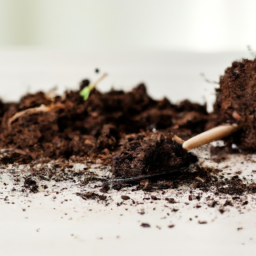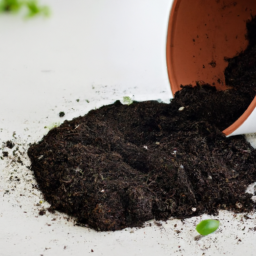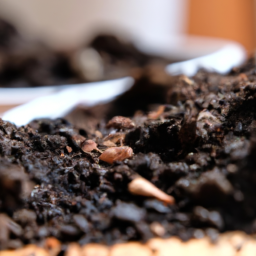
Are you looking to keep your indoor plants healthy and thriving? One key factor to consider is the type of soil you use. Indoor plant soil plays a crucial role in providing the necessary nutrients and support for your plants to grow. Whether you’re a seasoned plant parent or just starting out, understanding the importance of indoor plant soil can make a big difference in the overall health and vitality of your indoor garden. Let’s delve into the world of indoor plant soil and explore how you can choose the best soil for your beloved greenery.
Benefits of Using the Right Indoor Plant Soil Mix
Indoor plants are a great way to bring nature into your home and create a peaceful and inviting atmosphere. However, in order for your indoor plants to thrive, it is essential to use the right soil mix. The soil you choose can have a huge impact on the health and growth of your plants. In this article, we will discuss the benefits of using the right indoor plant soil mix and provide you with some tips on how to choose the best soil for your indoor plants.
Improved Drainage and Aeration
One of the key benefits of using the right indoor plant soil mix is improved drainage and aeration. Good drainage is essential for preventing root rot and other moisture-related issues that can harm your plants. A well-draining soil mix will allow excess water to flow through the soil and out of the pot, preventing waterlogged conditions that can suffocate the roots.
In addition to good drainage, the right soil mix will also provide adequate aeration for the roots. Proper aeration is essential for healthy root growth and overall plant health. A soil mix that is too compacted or dense will restrict airflow to the roots, leading to oxygen deprivation and root rot. By using a soil mix that is light and airy, you can ensure that your plants receive the oxygen they need to thrive.
When choosing a soil mix for your indoor plants, look for a mix that contains ingredients like perlite, vermiculite, or sand to improve drainage and aeration. These materials will help create a well-balanced soil mix that will promote healthy root growth and prevent waterlogging.
Optimal Nutrient Absorption
Another benefit of using the right indoor plant soil mix is optimal nutrient absorption. Indoor plants rely on the nutrients in the soil to support their growth and development. A soil mix that is rich in organic matter and nutrients will provide your plants with the essential elements they need to thrive.
In addition to providing essential nutrients, the right soil mix will also help your plants absorb these nutrients more effectively. A well-balanced soil mix will have the right pH level and nutrient balance to ensure that your plants can easily take up the nutrients they need. This will help prevent nutrient deficiencies and ensure that your plants remain healthy and vibrant.
When selecting a soil mix for your indoor plants, look for a mix that is specifically formulated for indoor plants and contains a balanced blend of nutrients. You can also supplement your soil mix with organic fertilizers to provide your plants with an extra boost of nutrients.
Reduced Risk of Pests and Diseases
Using the right indoor plant soil mix can also help reduce the risk of pests and diseases. Healthy plants are more resistant to pests and diseases, and a well-balanced soil mix can help promote plant health and immunity. A soil mix that is too wet or compacted can create the perfect environment for pests and diseases to thrive, so it is important to choose a soil mix that promotes good plant health.
In addition to promoting plant health, the right soil mix can also help prevent the spread of pests and diseases. A soil mix that is well-draining and aerated will help prevent the buildup of moisture and reduce the risk of fungal infections and other diseases. By using a high-quality soil mix, you can help protect your indoor plants from common pests and diseases and ensure that they remain healthy and happy.
When selecting a soil mix for your indoor plants, look for a mix that is free from pests and diseases and has been sterilized to prevent contamination. You can also use natural pest control methods, such as introducing beneficial insects or using neem oil, to further protect your plants from pests and diseases.

How to Choose the Best Indoor Plant Soil for Different Types of Plants
Understanding the Importance of Indoor Plant Soil
When it comes to caring for indoor plants, one of the most crucial aspects to consider is the type of soil you use. Indoor plant soil serves as the foundation for your plants, providing them with essential nutrients, moisture, and support for healthy growth. The right soil can make a significant difference in the overall health and vitality of your indoor plants.
When choosing indoor plant soil, it’s essential to consider the specific needs of the plants you are growing. Different types of plants require different soil compositions to thrive. Understanding the unique requirements of each plant will help you select the best soil for optimal growth and development.
In addition to providing nutrients and moisture, indoor plant soil also plays a vital role in aeration and drainage. Good soil structure allows for proper air circulation around the roots and prevents waterlogging, which can lead to root rot and other issues. Choosing the right soil will help create a healthy environment for your indoor plants to flourish.
It’s important to note that not all indoor plant soils are created equal. There are various types of soil available on the market, each with its own unique characteristics and benefits. By understanding the different options and their suitability for specific plants, you can make an informed decision when selecting soil for your indoor garden.
Choosing the Right Soil for Different Types of Plants
When it comes to choosing the best indoor plant soil for different types of plants, there are several factors to consider. The first step is to determine the specific needs of the plants you are growing. Some plants prefer well-draining soil, while others thrive in moisture-retentive soil. Understanding the preferences of your plants will help you select the most suitable soil for their growth.
For plants that require good drainage, such as succulents and cacti, a well-draining soil mix is essential. These plants are prone to root rot if their roots sit in waterlogged soil for extended periods. A sandy soil mix or a cactus mix that contains perlite or sand can provide the necessary drainage for these plants to thrive.
On the other hand, plants that prefer moisture-retentive soil, such as ferns and tropical plants, will benefit from a soil mix that holds moisture well. A peat-based potting mix or a blend that contains coconut coir can help retain moisture and provide a suitable environment for these plants to grow.
It’s also essential to consider the pH level of the soil when choosing indoor plant soil. Some plants, such as acid-loving plants like azaleas and camellias, thrive in acidic soil, while others prefer neutral or slightly alkaline soil. Testing the pH level of the soil and selecting a mix that aligns with the needs of your plants will help promote healthy growth and vibrant foliage.
Tips for Maintaining Healthy Indoor Plant Soil
Once you have selected the best indoor plant soil for your plants, it’s essential to maintain its quality to ensure the continued health and vitality of your indoor garden. Regularly monitoring the moisture level of the soil and adjusting your watering schedule accordingly can help prevent issues such as overwatering or underwatering.
It’s also a good idea to periodically check the nutrient levels of the soil and supplement with fertilizers as needed. Indoor plants rely on the nutrients present in the soil for their growth, and a lack of essential nutrients can lead to stunted growth and yellowing leaves. Using a balanced fertilizer or a specialized plant food can help provide your plants with the nutrients they need to thrive.
In addition to monitoring moisture and nutrient levels, it’s essential to repot your plants as needed to prevent root-bound conditions. Over time, plants can outgrow their pots and become root-bound, which can restrict their growth and lead to health issues. Repotting your plants in fresh soil will provide them with the space they need to continue growing and thriving.
By choosing the best indoor plant soil for your plants and following these tips for maintaining healthy soil, you can create an optimal environment for your indoor garden to flourish. Taking the time to understand the unique needs of your plants and providing them with the right soil and care will help ensure their long-term health and vitality.

Tips for Properly Maintaining Indoor Plant Soil Health and Nutrients
Understanding the Importance of Indoor Plant Soil Health
Indoor plant soil health is crucial for the overall well-being of your plants. Healthy soil provides essential nutrients, oxygen, and water to the roots, ensuring proper growth and development. Poor soil quality can lead to nutrient deficiencies, root rot, and other issues that can harm your plants. Therefore, it is essential to maintain the health of your indoor plant soil to ensure the vitality of your plants.
One of the key factors in maintaining indoor plant soil health is ensuring proper drainage. Excess water can lead to waterlogged soil, which can suffocate the roots and promote the growth of harmful bacteria and fungi. To prevent this, make sure your pots have drainage holes and use a well-draining soil mix. You can also add perlite or sand to improve drainage.
Another important aspect of indoor plant soil health is ensuring proper aeration. Compact soil can restrict oxygen flow to the roots, leading to stunted growth and nutrient deficiencies. To improve aeration, regularly aerate the soil by gently loosening it with a fork or chopstick. You can also add organic matter like compost to improve soil structure and promote a healthy root system.
Maintaining the pH balance of your indoor plant soil is also crucial for plant health. Most indoor plants prefer slightly acidic soil with a pH range of 6.0 to 7.0. You can test the pH of your soil using a soil pH tester and adjust it as needed with amendments like lime or sulfur. Keeping the pH within the optimal range will ensure that your plants can efficiently absorb nutrients from the soil.
Providing Nutrients for Indoor Plant Soil Health
In addition to maintaining soil health, providing essential nutrients is vital for the growth and vitality of your indoor plants. Indoor plants rely on soil nutrients to support their metabolic processes, promote healthy growth, and develop strong roots. Therefore, it is essential to regularly replenish the nutrients in your indoor plant soil to ensure the health and vigor of your plants.
One of the primary nutrients that indoor plants need is nitrogen. Nitrogen is essential for promoting leafy growth and overall plant health. You can provide nitrogen to your indoor plants by using a balanced fertilizer or incorporating nitrogen-rich amendments like compost or fish emulsion. Be careful not to over-fertilize, as excessive nitrogen can lead to nutrient imbalances and harm your plants.
Phosphorus is another essential nutrient for indoor plant growth, as it plays a crucial role in energy transfer and root development. Phosphorus deficiency can lead to stunted growth and poor flowering in plants. You can provide phosphorus to your indoor plants by using a fertilizer with a higher phosphorus content or adding bone meal to the soil. Make sure to follow the recommended dosage to prevent nutrient imbalances.
Potassium is also important for indoor plant health, as it helps regulate water uptake, promote disease resistance, and support overall plant vigor. You can provide potassium to your indoor plants by using a fertilizer with a higher potassium content or adding potassium sulfate to the soil. Regularly monitoring the nutrient levels in your soil and adjusting your fertilization routine accordingly will help ensure that your plants receive the nutrients they need to thrive.
Troubleshooting Common Indoor Plant Soil Issues
Despite your best efforts to maintain indoor plant soil health, you may encounter some common issues that can affect the growth and vitality of your plants. One common problem is compacted soil, which can restrict root growth and oxygen uptake. To address compacted soil, gently aerate the soil with a fork or chopstick and add organic matter to improve soil structure.
Another common issue is nutrient deficiencies, which can manifest as yellowing leaves, stunted growth, or poor flowering. If you suspect a nutrient deficiency, test the soil pH and nutrient levels to identify the problem. You can then address the deficiency by adjusting the pH or providing the lacking nutrient through fertilization or soil amendments.
Overwatering is another common issue that can lead to waterlogged soil, root rot, and other problems. To prevent overwatering, allow the soil to dry out between waterings and adjust your watering schedule based on the moisture needs of your plants. You can also improve drainage by using pots with drainage holes and a well-draining soil mix.
By following these tips for properly maintaining indoor plant soil health and nutrients, you can ensure that your plants thrive and flourish in their indoor environment. Remember to regularly monitor the health of your soil, provide essential nutrients, and address any issues promptly to promote the growth and vitality of your indoor plants.
Here’s the Summary Snapshot
If you’re looking to keep your indoor plants healthy and thriving, it’s essential to pay attention to the soil they’re planted in. Indoor plant soil plays a crucial role in providing the necessary nutrients and support for your plants to grow. Choosing the right type of soil can make a significant difference in the overall health and growth of your indoor plants.
When selecting indoor plant soil, it’s important to consider factors such as drainage, aeration, and nutrient content. Opt for a well-draining soil mix that allows excess water to flow out easily, preventing root rot and other issues caused by waterlogged soil. A soil mix with good aeration will help roots to breathe and prevent compacted soil, which can hinder plant growth. Additionally, choosing a soil mix that is rich in nutrients will provide your plants with the essential elements they need to thrive. By paying attention to the soil your indoor plants are planted in, you can help ensure they stay healthy and vibrant for years to come.
Your Burning Questions Answered:
Q1: What type of soil is best for indoor plants?
A1: The best type of soil for indoor plants is a well-draining potting mix specifically formulated for houseplants. This type of soil will provide the right balance of nutrients and aeration for your plants to thrive indoors.
Q2: Can I use regular garden soil for my indoor plants?
A2: It is not recommended to use regular garden soil for indoor plants as it may not provide adequate drainage and could lead to root rot. Garden soil can also contain pests and diseases that may harm your indoor plants.
Q3: How often should I repot my indoor plants with fresh soil?
A3: Indoor plants should be repotted with fresh soil every 1-2 years, or when the roots start to outgrow the pot. Repotting will help refresh the soil and provide your plants with the nutrients they need to continue growing.
Q4: Can I reuse old soil from my indoor plants?
A4: It is not recommended to reuse old soil from indoor plants as it may be depleted of nutrients and compacted, which can hinder plant growth. It is best to refresh the soil with a new potting mix when repotting your plants.
Q5: How can I improve the quality of soil for my indoor plants?
A5: You can improve the quality of soil for your indoor plants by adding organic matter such as compost or worm castings to provide additional nutrients. You can also mix in perlite or sand to improve drainage and aeration for your plants.

James Wong is a renowned ethnobotanist, plant scientist, and local television presenter. With a passion for demystifying plant science, he is known for translating complex botanical concepts into practical advice for everyday plant enthusiasts. James’s expertise spans from traditional gardening to cutting-edge plant technologies, making his insights accessible and informative.


